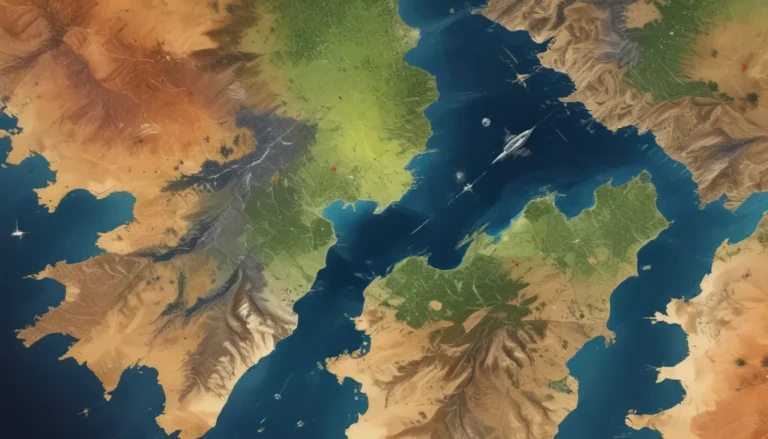A Note About Images: The images used in our articles are for illustration purposes only and may not exactly match the content. They are meant to engage readers, but the text should be relied upon for accurate information.
The Bay of Bengal, nestled in the northeastern part of the Indian Ocean, is a vast body of water with a rich and diverse history. It is bordered by several countries, including India, Bangladesh, Myanmar, Sri Lanka, and Thailand, making it a significant geographical and cultural hub in the region. The bay is renowned for its stunning coastline, abundant marine life, and strategic importance for trade and commerce.
A Glimpse into the Bay of Bengal: Unveiling its Marvels
The Bay of Bengal holds a myriad of captivating secrets waiting to be explored. From its role in shaping monsoon patterns to its diverse marine ecosystems, this remarkable body of water offers a wealth of natural wonders, historical significance, and ecological importance. Let’s embark on a journey to uncover the intriguing facets of the Bay of Bengal.
The Largest Bay in the World: A Closer Look at its Magnificence
The Bay of Bengal, located in the northeastern part of the Indian Ocean, proudly stands as the largest bay in the world. Spanning an area of approximately 2.17 million square kilometers, it is bordered by India, Sri Lanka, Bangladesh, Myanmar, and the Andaman and Nicobar Islands. Known for its rich biodiversity and significant economic importance, the bay serves as a vital lifeline for the surrounding countries.
The Enchanting Sundarbans: Exploring the Largest Mangrove Forest
Nestled in the delta of the Ganges, Brahmaputra, and Meghna rivers, the Sundarbans proudly stands as the largest mangrove forest globally. Recognized as a UNESCO World Heritage Site, this unique ecosystem is home to Royal Bengal tigers, diverse wildlife, and a network of tidal waterways. Its importance lies in being a crucial habitat for numerous species of flora and fauna, adding to the bay’s natural allure.
Tropical Cyclones and Challenges: Navigating the Storms of the Bay
The Bay of Bengal is notorious for its frequent tropical cyclones, fueled by the warm waters that provide the energy for their formation. Coastal areas of India, Bangladesh, and Myanmar face significant challenges in terms of disaster preparedness and mitigation due to these powerful phenomena. The region has witnessed some of the deadliest cyclones in history, highlighting the importance of resilience and preparation.
A Thriving Fishing Industry: Sustaining Livelihoods Along the Coastline
The bay supports a thriving fishing industry, offering a vital source of livelihood for millions of people residing along its coastline. Teeming with a diverse range of fish, the Bay of Bengal serves as a significant fishing zone for countries like India, Bangladesh, and Myanmar, contributing to the sustenance of coastal communities and the regional economy.
A Tapestry of History and Culture: Connecting Lands and Seas
Throughout history, the Bay of Bengal has been a hub of maritime trade and cultural exchange, linking the Indian subcontinent with Southeast Asia. Witnessing the rise and fall of ancient civilizations, the spread of religions, and the exchange of goods and ideas, the bay has played a pivotal role in shaping the cultural tapestry of the region.
Coastal Beauty and Shipping Routes: Navigating the Waters of Commerce
The strategic location of the Bay of Bengal makes it a vital shipping route, facilitating trade between countries in South Asia and Southeast Asia. Serving as a gateway for international maritime commerce, it connects major ports in India, Bangladesh, Myanmar, and Sri Lanka, enhancing economic activities and regional cooperation.
Diverse Marine Life: Embracing the Underwater Wonderland
The Bay of Bengal boasts a rich and diverse array of marine life, including various species of fish, marine mammals, sea turtles, and coral reefs. This unique ecosystem supports the livelihoods of coastal communities and contributes to the overall marine biodiversity of the Indian Ocean, showcasing the wonders of underwater life.
Environmental Challenges and Conservation Efforts: Preserving the Precious Ecosystem
Despite its natural beauty, the Bay of Bengal faces environmental challenges such as pollution, overfishing, habitat degradation, and the impacts of climate change. These issues pose significant threats to the delicate balance of the bay’s ecosystems and the livelihoods of those dependent on its resources, emphasizing the importance of conservation and sustainable practices.
From Resources to Opportunities: Exploring the Bay’s Oil and Gas Reserves
Known for its significant oil and gas reserves, the Bay of Bengal attracts interest from various energy companies for exploration and extraction activities. While these reserves present opportunities for economic development, they also raise concerns about environmental conservation and sustainable resource management, highlighting the need for responsible utilization of natural resources.
A Haven for Tourism and Cultural Exploration: Embracing the Beauty of the Bay
The picturesque coastlines, pristine beaches, and cultural attractions surrounding the Bay of Bengal make it a popular destination for tourism and coastal activities. From serene beach resorts to vibrant cultural festivals, the bay offers a diverse range of experiences for travelers and enthusiasts seeking to explore its natural and cultural heritage, inviting all to discover its charm and allure.
In conclusion, the Bay of Bengal stands as a fascinating and diverse region that captivates with its natural beauty and rich cultural heritage. From its unique marine life to its significant economic and geopolitical importance, the bay holds a special place in the world’s oceans. Exploring its wonders not only unveils its physical marvels but also reveals its deep historical and ecological significance, making it a truly remarkable part of our planet.
FAQs About the Bay of Bengal
What is the significance of the Bay of Bengal?
The Bay of Bengal holds immense economic, cultural, and ecological significance. It supports vital fisheries, trade routes, and natural resources, making it a crucial region for numerous countries.
What are some notable geographical features of the Bay of Bengal?
The Bay of Bengal is home to diverse landscapes, including the Sundarbans mangrove forest, the Andaman and Nicobar Islands, and a wide range of marine ecosystems, showcasing its remarkable natural diversity.
Exploring the wonders of the Bay of Bengal opens up a world of awe-inspiring experiences and valuable insights into the interplay of nature, culture, and commerce in this vibrant region. Let the beauty and majesty of the bay inspire you to delve deeper into its secrets and appreciate the significance it holds for the surrounding countries and the global community.






